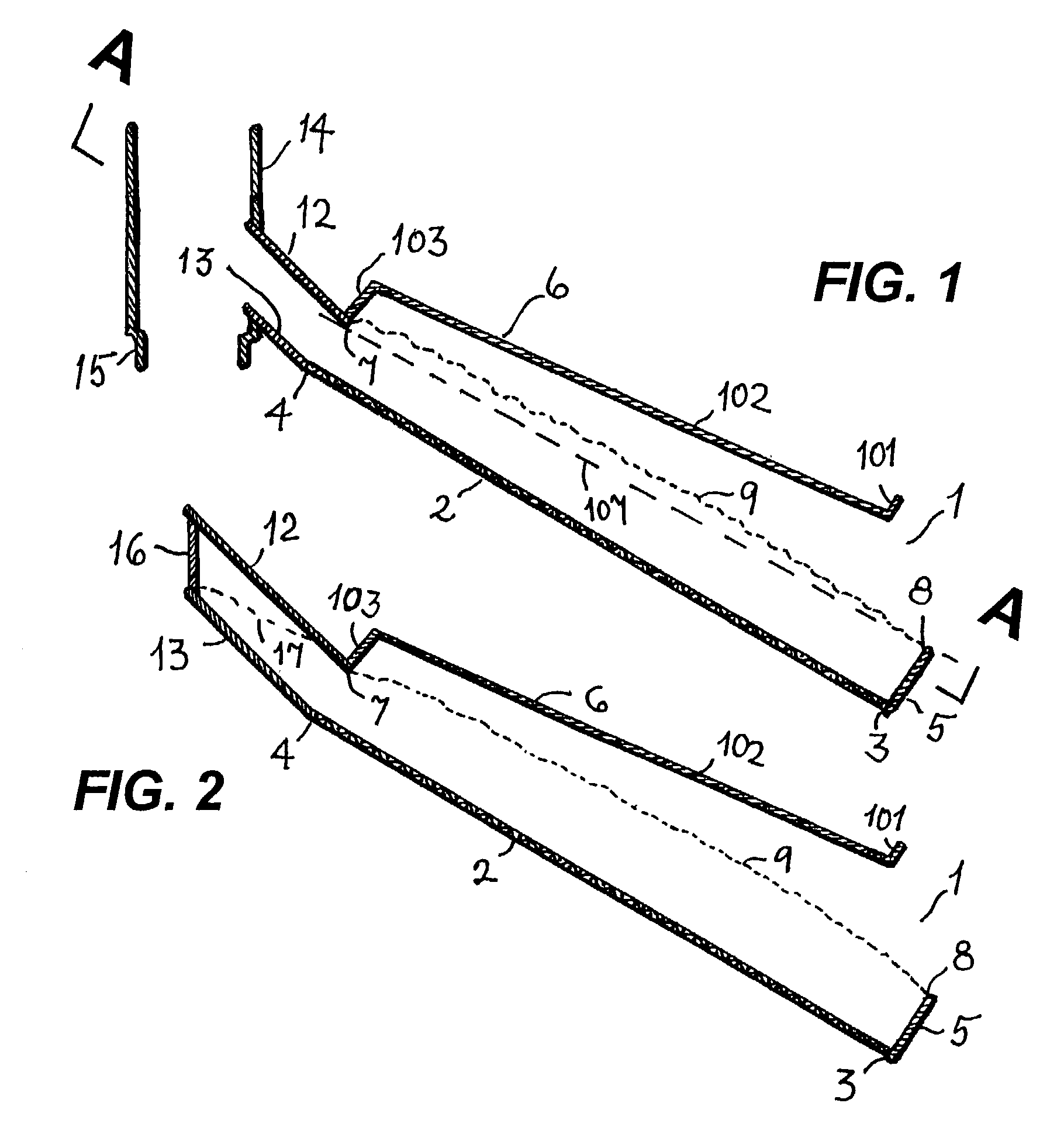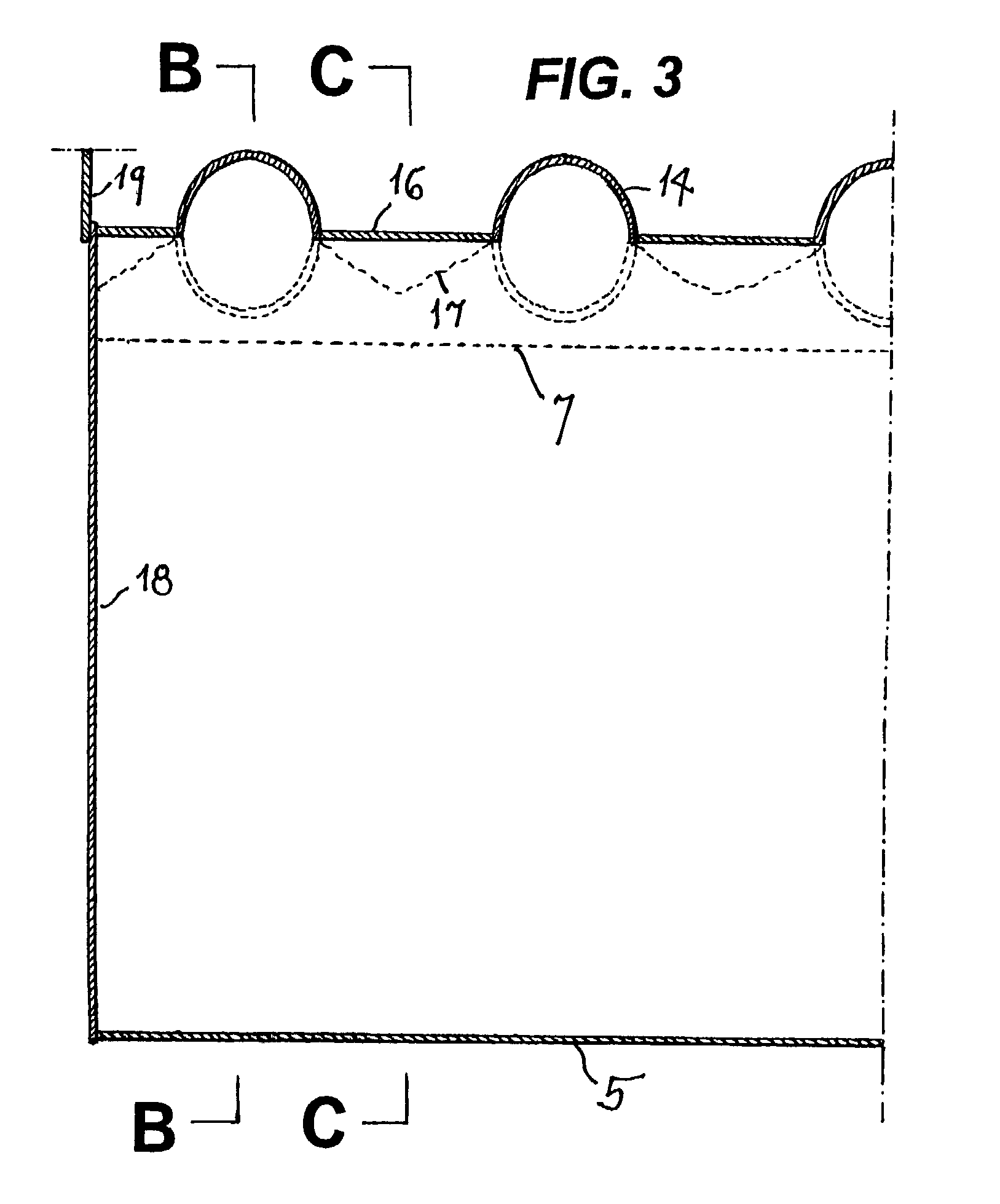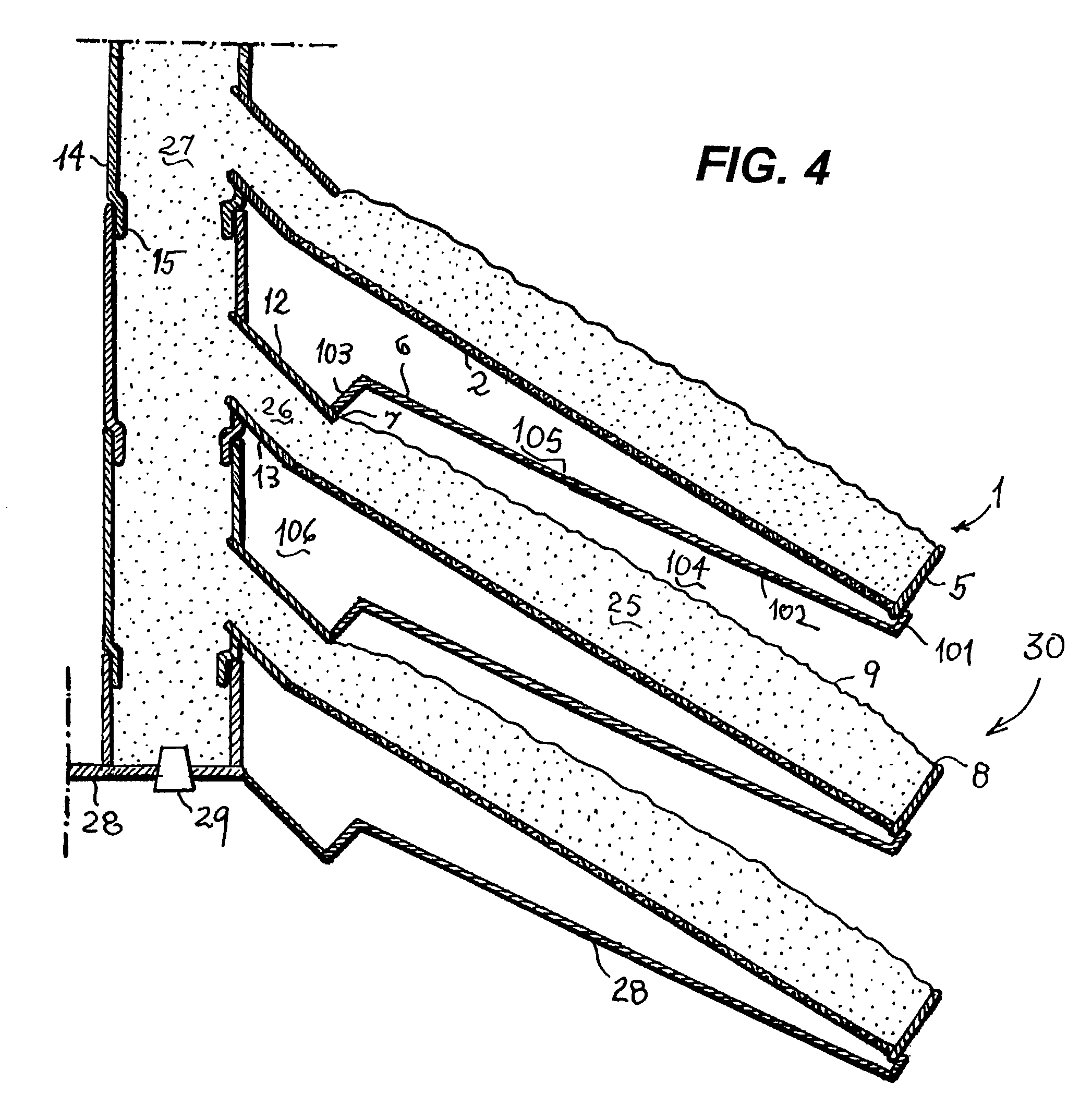Method and apparatus for cake-forming granular-bed filtration
- Summary
- Abstract
- Description
- Claims
- Application Information
AI Technical Summary
Benefits of technology
Problems solved by technology
Method used
Image
Examples
Embodiment Construction
[0041]In the several figures, like reference numerals refer to like parts having like functions.
[0042]FIG. 1 is a vertical section through an individual filter tray 1 (absent granular material), in which there is a granular-material-supporting porous plate 2 inclined at an angle to the horizontal and having a lower, outer edge 3 and an upper, inner edge 4. In FIG. 1, plate 2 is shown as a screen with openings smaller than the granular material to be retained. Other permeable materials may sometimes be preferred for use in plate 2. For example, in a filter-tray panel intended to filter gas at a temperature beyond 1,000° C., use of a porous sintered ceramic plate is advantageous. For retaining granular medium upon plate 2, nonporous plate 5, articulating with edge 3, presents an upper edge 8 for retaining the outer edge of a bed of granular medium that will rest upon plate 2 (whose face will be approximately as shown by dashed curvilinear line 9 in FIG. 1). Nonporous plate member 6 co...
PUM
| Property | Measurement | Unit |
|---|---|---|
| Fraction | aaaaa | aaaaa |
| Fraction | aaaaa | aaaaa |
| Fraction | aaaaa | aaaaa |
Abstract
Description
Claims
Application Information
 Login to View More
Login to View More - R&D
- Intellectual Property
- Life Sciences
- Materials
- Tech Scout
- Unparalleled Data Quality
- Higher Quality Content
- 60% Fewer Hallucinations
Browse by: Latest US Patents, China's latest patents, Technical Efficacy Thesaurus, Application Domain, Technology Topic, Popular Technical Reports.
© 2025 PatSnap. All rights reserved.Legal|Privacy policy|Modern Slavery Act Transparency Statement|Sitemap|About US| Contact US: help@patsnap.com



